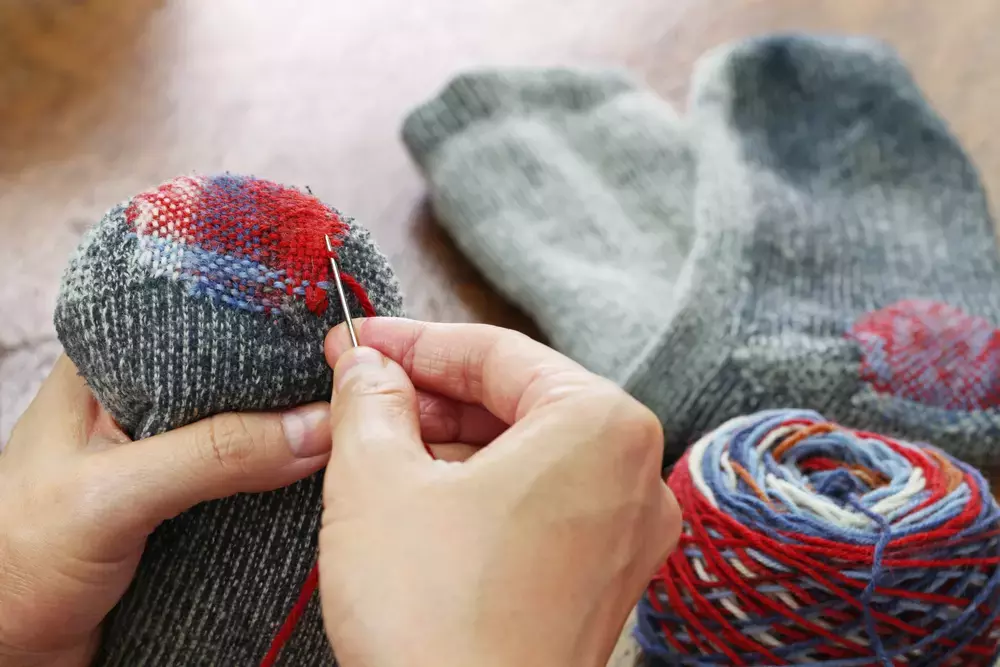How to Darn a Sock
2020-11-24
Socks are a particularly troublesome matter when it comes to clothing repair and restoration. First, people don’t want a weird feeling when they’re wearing socks. A small lump under your heel is just about as comfortable as a rock in your shoe. So a lot of people have given up on restoring socks and instead just toss them out.
The creative community, however, puts a lot of focus on sustainability. To opt for a more sustainable method of handling your over-worn socks, you can repair them without even having to get behind the sewing machine! It's a simple method of sewing that takes only a few minutes.
The Lost Art of Darning
Darning is a bit different than most other methods of sewing. You're not patching a hole. Instead, you're using thread to replace the fabric without any knots. It's the most comfortable method of sock restoration, and it doesn't take much time.
Typically, people save darning for their favorite socks or their more expensive socks, but you can darn various socks. If you have a favorite pair is a cotton-blend or outright synthetic material, you can still darn them!
Materials - and Special Materials
Okay, darning socks might require a bit of creativity or a bit of shopping because you will need materials that you probably don’t have on hand. Or, you’ll have to find some creative alternatives.
Here’s what you need to get started:
● A sock in a sad state
● Yarn or embroidery floss - choose which works best for the socks material.
● Scissors
● Darning egg - or a creative alternative
● Darning Needle
A darning needle is a needle much more extensive than your standard size and different from other needles. The eye is large enough to handle embroidery floss or yarn. There are various sizes for darning needles, and you'll choose the size of the needle based on the material of the sock. If you have socks made from thick yarn, then you'll need a large darning needle. But most socks will require a small to medium-sized needle. The thicker the material, the larger the needle.
A darning egg is a tool used to stretch out the fabric of the sock without losing its shape. The effect is that it is much easier to accomplish a smooth repair without bunching the fabric. You can buy a darning egg; these are usually wood or plastic, and not surprisingly, egg-shaped. However, you can also use:
● Mushrooms
● Baseball bat
● Lightbulbs (not recommended)
● Easter eggs
● Maracas
● Any egg-shaped item that is not fragile
How to Darn
Fit your sock over your darning egg, or alternative, and center the hole so that there’s an even stretch around the hole.
Start with your needle about ⅛-inch outside from the outer circle of the hole. Use a simple running stitch to stitch around the hole. You might hesitate to go through the weak areas of the sock but stitch through those areas too. Make a complete circle, and then you'll start filling the circle to replace the lost material.
Begin from the right-hand side of the hole circle, and create a straight running stitch. You'll do this all the way across the circle. Make a series of straight lines that fill up the circle, and these looser stitches will fill in the hole.
Finishing Stitching
Now that you made a series of columns to fill in the circle, you'll need to finish the stitching by doing the same thing but horizontally. Create rows of that same running stitch, and you'll see how they come together to close up the hole without the risk of unnecessary stretching, and it doesn't let the first columns of stitches to move around.
Sew all the way to the edges of the circle and then get ready to finish it up. Give a tight weave of your extra embroidery floss or yarn. You can always go around the edge of your initial circle. Do not knot the floss or yarn. After you’ve woven the threading through, clip it.
GoldStar Tool is here for all your sewing tips and tricks! Check out our blog on all things sewing. If you are purchasing from GoldStar Tool and have any questions, feel free to contact our customer service team. We are happy to help you purchase in bulk, or resolve any other issues you may have.





